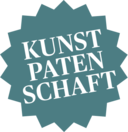Glass bell keyboard instrument (glass bell piano)
Before 1596, Manufacturer: anonym
Glass bell keyboard instrument (glass bell piano)
The glass bell keyboard instrument is mentioned in the inventory of archduke's Ferdinand II estate in 1596 as "ain instrument von glaszwerch". At that time it was stored together with other keyboard, stringed and wind instruments in the 4th box of the art chamber. It consits of a crate-like case composed of different wood types, it is made with a protruding keyboard and a detachable lid. The emblem of archduke Ferdinand II, flanked by Minerva and Mars, embellishes the front; further ornaments are tendrils, grotesques, musical instruments, and humanoid fantasy figures. The ornaments show stylistic proximities to the frescos by Dionys Hallaert (ca. 1570) in the "Spanish Hall" of castle Ambras. In the inner of the instrument glass bells serve as resonanting bodies. A keyboard action activates felt covered mallets that hit the glass bells. Today, all glass bells are missing; according to a notice in the inventory the instrument was still sounding in 1821. This particular instrument is the only of its type that survived and it demonstrates the intensive search for new tonal and acoustic approaches. A comparable instrument was located in the art chamber of emperor Rudolf II in Praque. (bd)
Object data
Object Name
Glass bell keyboard instrument (glass bell piano)
Culture
Austria, Tyrol (?)
Dated
Before 1596
Manufacturer
Material
Case coniferous wood; white keys boxwood, black keys hardwood dark stained; glass bells (now missing)
Dimensions Cover size is a museum or exhibition-specific information. It does not specify the real dimensions of the musical instrument.
960 mm x 570 mm x 420 mm
Image rights
Kunsthistorisches Museum Wien, Sammlung alter Musikinstrumente
Inv. No.
Sammlung alter Musikinstrumente, 124
Permalink (citable Link) to this page: www.khm.at/en/object/84818/
Kunst & Patenschaft
This object is still without a Art Patron. Accept the patronage and make sure that this cultural treasure is preserved for future generations.
Your donation is a direct and sustainable contribution to the scientific documentation, research, restoration, and presentation of the artworks of the Kunsthistorisches Museum Wien.

